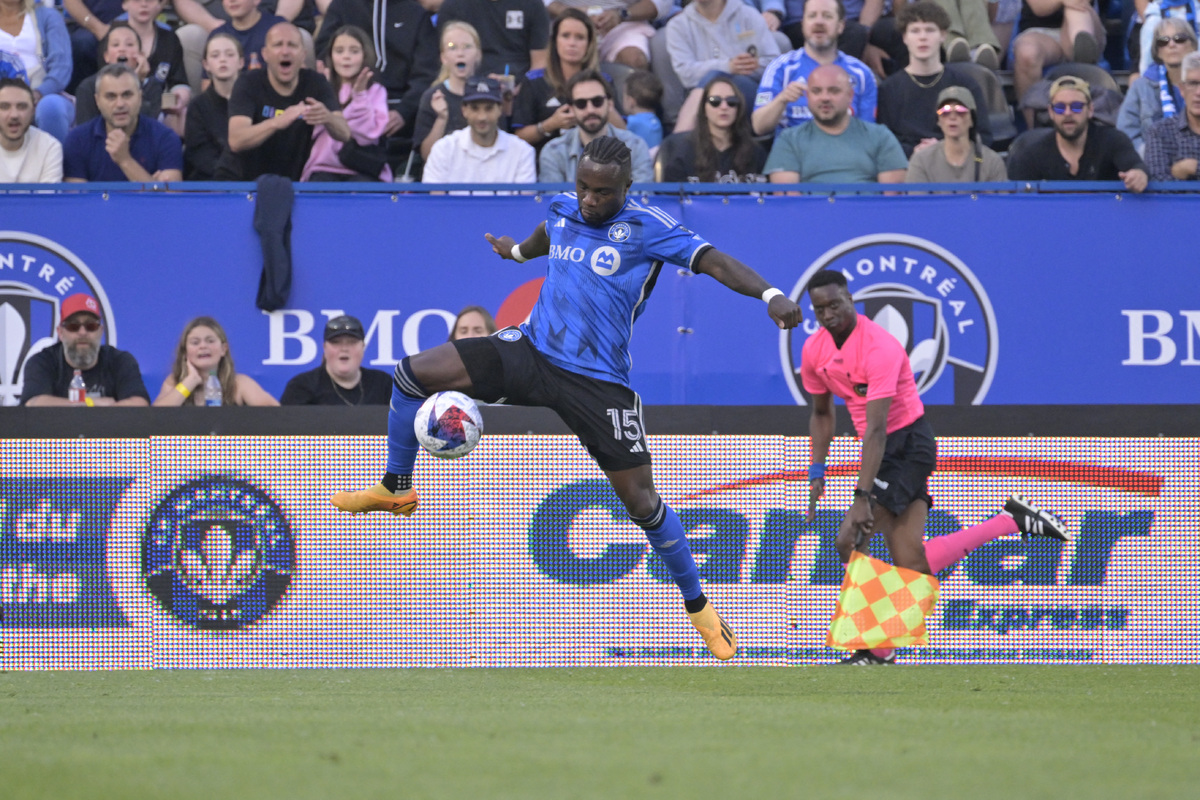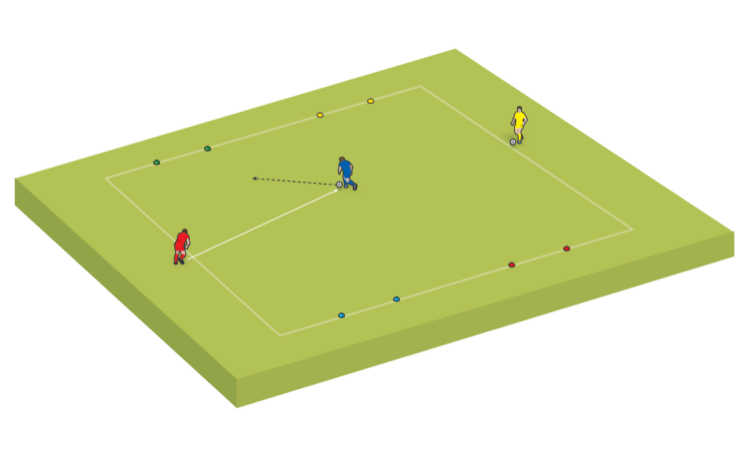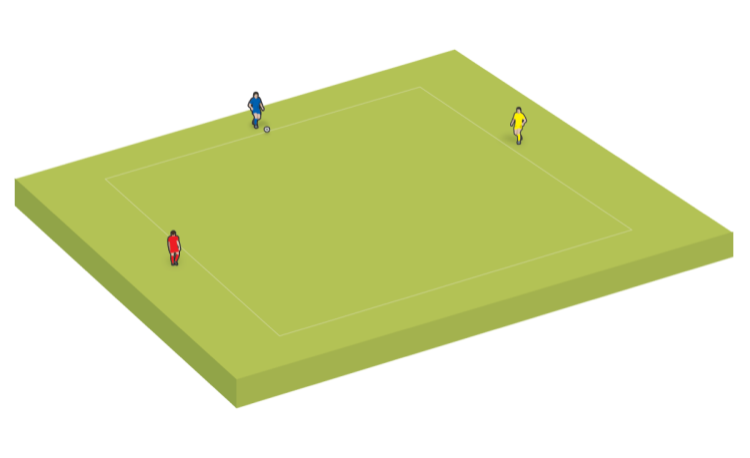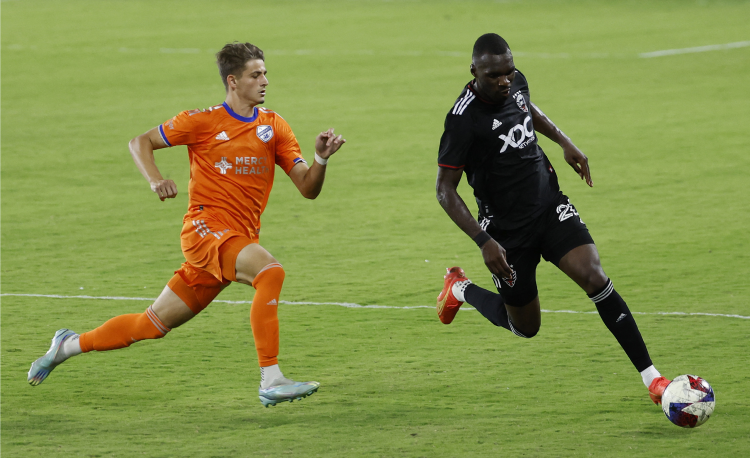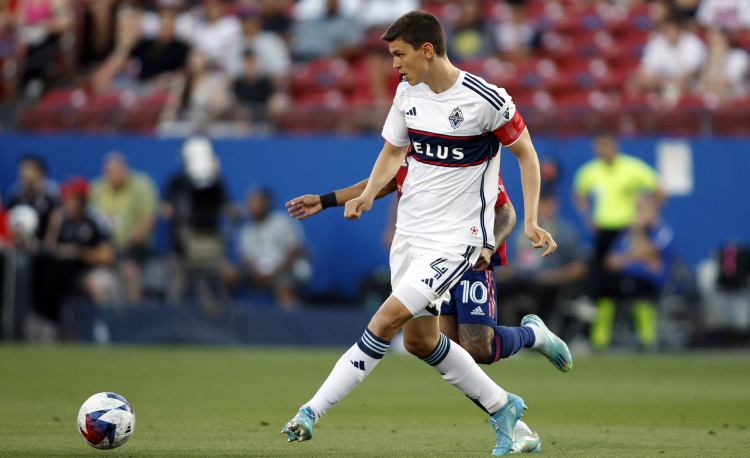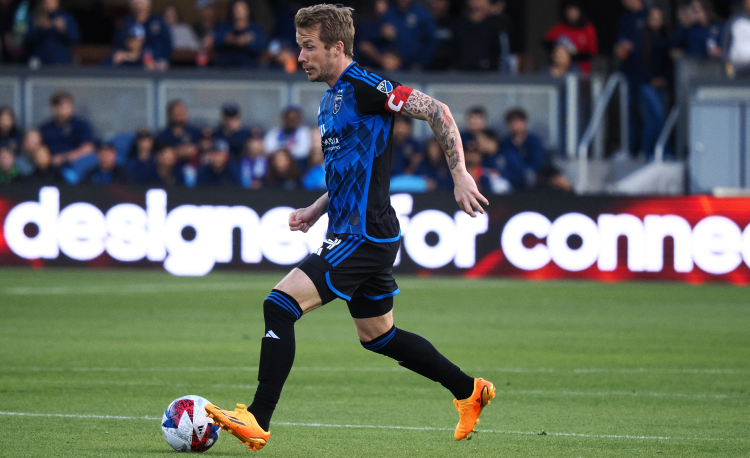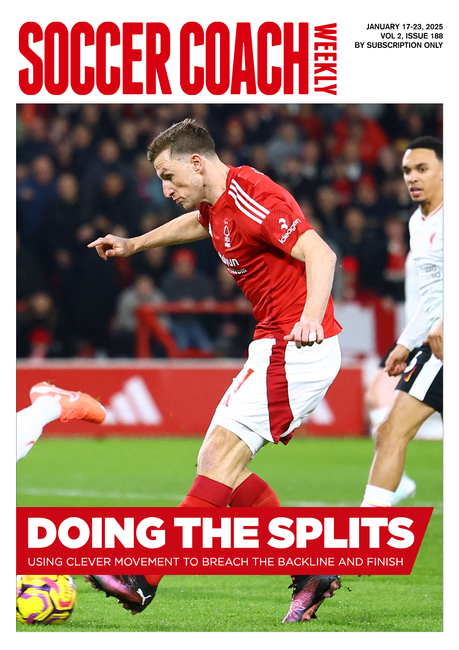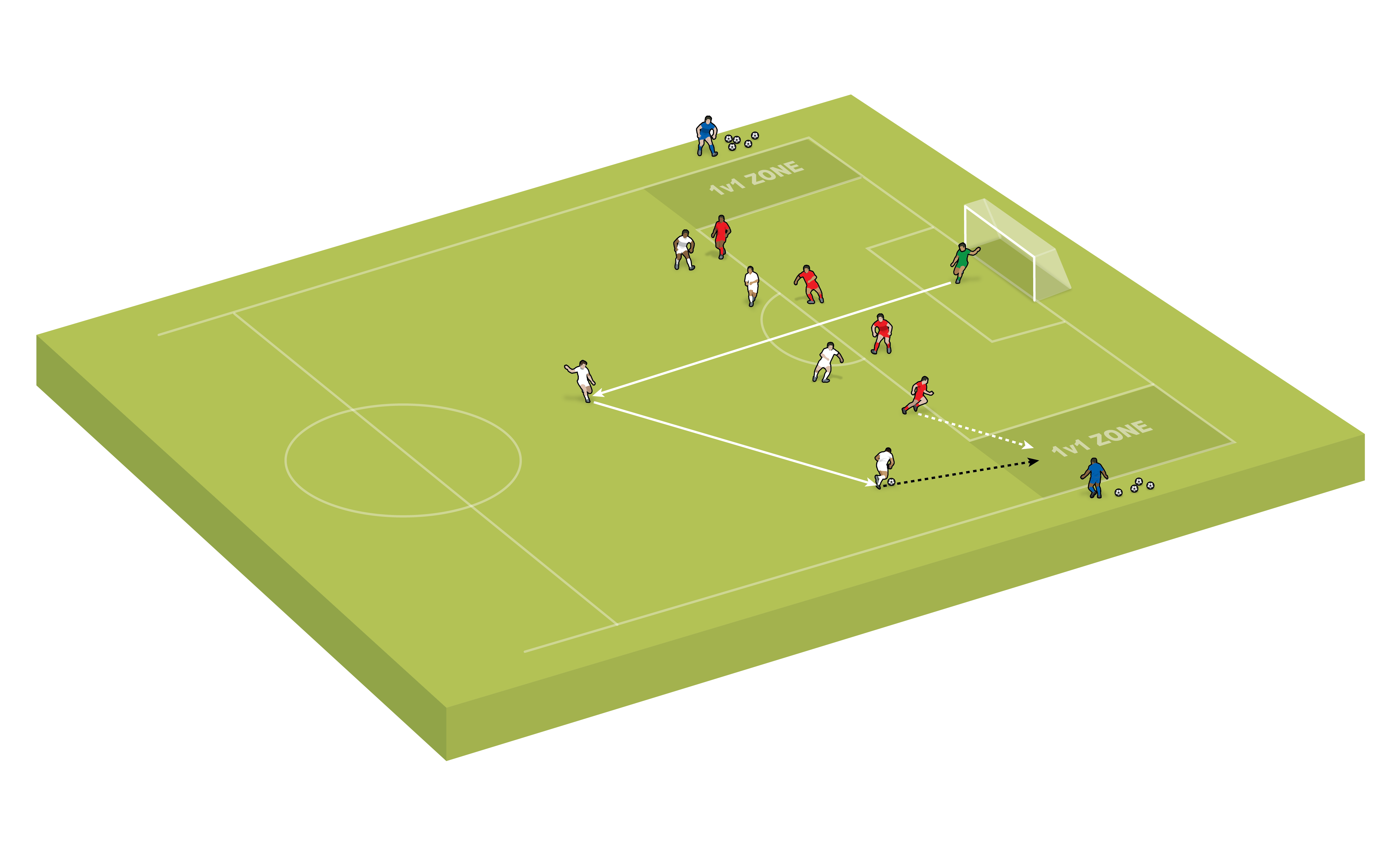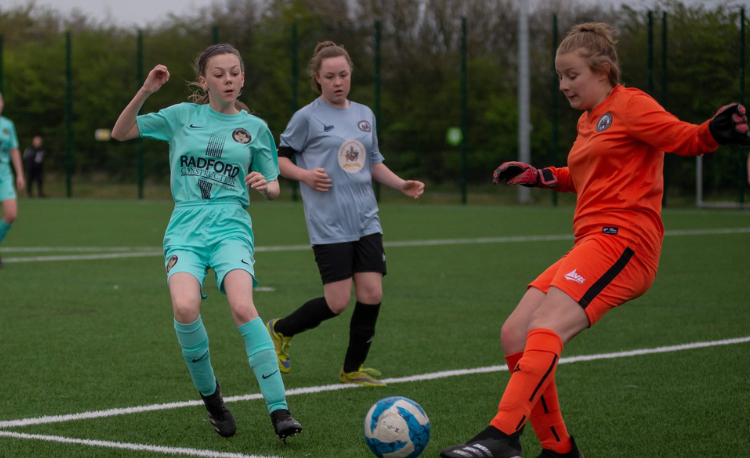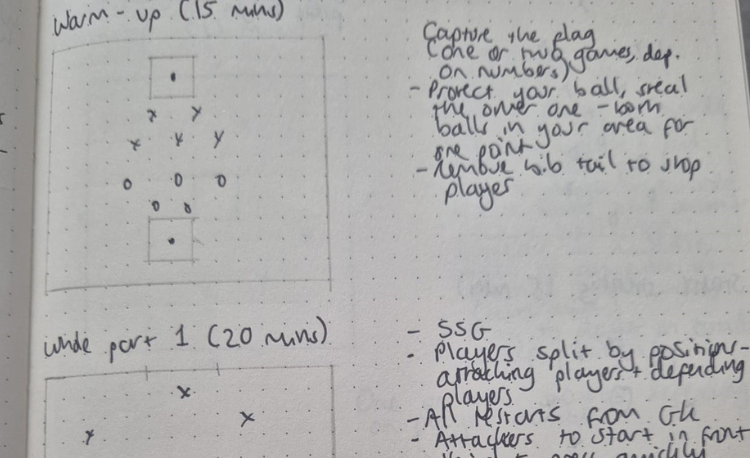What is receiving?
Carl Wild guides novices on the purpose and technique of ball control, with tips on how to coach your players to receive better.
Receiving, in its simplest form, is the initial stage of gaining individual possession of the ball through a team-mate passing it to you.
In other words, it is the first touch you have once the ball arrives from a team-mate.
Why do we receive?
To retain possession
The main responsibility of the player receiving a pass is to make sure that the team retains possession.
The first touch a player takes when receiving a pass needs to ensure their team will still have possession of the ball and are therefore still at an advantage - even if that advantage is just for a few seconds longer.
To secure the movement of the ball from one area of the pitch to another
Being in a position to receive a pass, and receiving it effectively, allows a player to move the ball onto a team-mate.
The player on the ball could be under pressure from an opponent and, therefore, needs a team-mate’s support; or a teammate could be in be a better position to play forward.
To support what comes next
Another reason a player needs to be able to receive a pass is so that they can complete another action.
In some instances, players will complete an action – like a pass or a shot – without the need to receive or control the ball. This can be called a first-time shot or pass.
However, in most circumstances before they go on to perform another action, such as passing, dribbling with the ball or shooting, a player will first need to take an initial touch.
What are the techniques for receiving?
There are some consistent elements that are needed, no matter how the player receives the ball. These are:
- Being able to judge the path or trajectory of the ball and the speed at which it is travelling. This will allow a player to readjust their body shape and positioning.
- Scanning before receiving the ball. This will allow a player to gain an understanding of what is around them which, in turn, will help them decide what they do next.
Players will also need to develop a range of different techniques to respond to receiving different types of passes.
Receiving a pass along the ground
The most common way in which a player will receive the ball is via a pass played along the ground.
When receiving the ball in this way, the main focus should be on where the first touch takes the ball, in terms of both the direction and the distance it travels from the player.
The direction should be dictated by where the player receiving the ball wants to go next. This will be heavily influenced by the positioning of opposition players, areas of space located on the pitch and the direction they need to go to get to the opponent’s goal.
When receiving a pass, players will ideally want to move away from danger and into space, providing them with more time on the ball and making it easier to retain possession.
Distance should also be influenced by what the receiving player wants to do next. For instance, if a player wants to drive or run with the ball, their first touch should be away from them, so that they have room to accelerate into the space. However, receiving a pass and then dribbling to get past a defender will require the ball to remain closer to the player.
The distance the ball travels is influenced by the weight of the first touch. A firmer touch, for example, will knock the ball further in front of a player, while a softer touch will keep it closer to the body.
A softer touch can be achieved by cushioning the ball. This means bringing the foot the player is using to receive the pass away from the ball as it makes contact. By doing so, it takes the power out of the pass, allowing the ball to remain close to the receiving player.
The inside of the foot is the most logical surface area to use to control the ball, given that it has the biggest surface area.
Other parts of the foot can also be used – the sole may be used to stop a slow ball dead, for example, while the laces and outside of the foot can also be used.
Receiving an aerial pass
An aerial pass is possibly the most difficult ball to receive, with the ability to readjust your body shape and positioning essential. Because the ball is travelling over a distance and through the air, it is more likely to move and change direction in flight.
The other factor to take into consideration is that, due to the distance the ball has to travel, the level of accuracy of the pass will be affected. Therefore, players will likely need to change where they are positioned, while readjusting their body shape at the same time, so they are able to meet the ball in the ideal place, with a balanced and stable stance.
The foot may be used to control an aerial ball, but other parts of the body, such as the chest or thigh, may also be used. This is usually dependent on the height of the ball as it reaches the player.
Whichever part of the body is used in receiving the pass, there will always be a need to cushion the ball, as previously described, to ensure it does not bounce away after the initial contact.
Other considerations are when and how we use the different parts of the body. For instance, when using the front of the foot, or the laces, it is important that the player only raises their foot slightly off the floor, as it allows the ball to reach the ground quickly.
With a raised foot, the ball is likely to bounce upwards and take time to reach the floor, providing time for an opponent to close down the space and apply pressure.
The sole of the foot can be used to receive a ball that lands just in front of the receiving player to stop it dead. Here, it is important that the player controls the ball as it lands, stopping the ball from travelling upwards.
For the thigh or chest, players need to follow the same actions as they would when using their foot, in that the thigh or chest should be moved away from the ball as contact is made to cushion it.
Receiving to play forward
This is when a player is looking to receive a forward pass and be in a position to play forward themselves straight away.
It is also known as receiving the ball on your back foot - the foot furthest from where the pass is coming from and closest to where the next pass needs to go.
The best example of this would be a midfielder receiving a pass from a defender and wanting to play into a striker quickly. Quite often, when receiving a pass, players will face the direction the ball is coming from - therefore, in this particular situation, they will be facing their own goal. So to play forward, they would need to turn so that they are facing the opposition’s goal.
In order to play forward without the need to turn, a player should receive with an open body. They will then be in a position to see where the ball is coming from and the area of the pitch they want to play the ball into, either through a pass or by moving with it.
This not only speeds up the process, but it allows the player to have a clearer view of what is around them.
Once they are in a position with an open body, the next part of the process is to receive the ball on the back foot, allowing the ball to roll across the body. This then naturally moves the ball in a forward direction, which makes the next action a forward one, as well.
Scanning is particularly important when receiving to play forward, as it is essential that there are no opponents directly behind the player. If there is, and the player opens their body and receives on the back foot, they will easily be dispossessed of the ball.
Therefore, in this instance, players will need to scan and be aware of what is around them before the pass is made, as they need to open their body early to indicate to their team-mate that they want the ball to be played to their back foot.
Related Files
Developing a player’s receiving skills
The importance of receiving cannot be underestimated, as the quality of the first touch will often have a significant impact on the next action the player takes.
For instance, if a player wants to take a shot after receiving the ball, and their first touch is a bit too heavy, it could mean they have to stretch for the ball, which is likely to result in them losing accuracy and power in their shot.
If a player’s touch is too weak and ends up stuck under their feet, they will require extra touches, which could lead to them being closed down by an opponent.
It is therefore essential that players master the ability to be able to receive the ball effectively in a number of different ways, allowing them to have the best impact on the game.
Newsletter Sign Up
Coaches Testimonials

Gerald Kearney, Downtown Las Vegas Soccer Club

Paul Butler, Florida, USA

Rick Shields, Springboro, USA

Tony Green, Pierrefonds Titans, Quebec, Canada
Subscribe Today
Discover the simple way to become a more effective, more successful soccer coach
In a recent survey 89% of subscribers said Soccer Coach Weekly makes them more confident, 91% said Soccer Coach Weekly makes them a more effective coach and 93% said Soccer Coach Weekly makes them more inspired.
*includes 3 coaching manuals
Get Weekly Inspiration
All the latest techniques and approaches
Soccer Coach Weekly offers proven and easy to use soccer drills, coaching sessions, practice plans, small-sided games, warm-ups, training tips and advice.
We've been at the cutting edge of soccer coaching since we launched in 2007, creating resources for the grassroots youth coach, following best practice from around the world and insights from the professional game.
